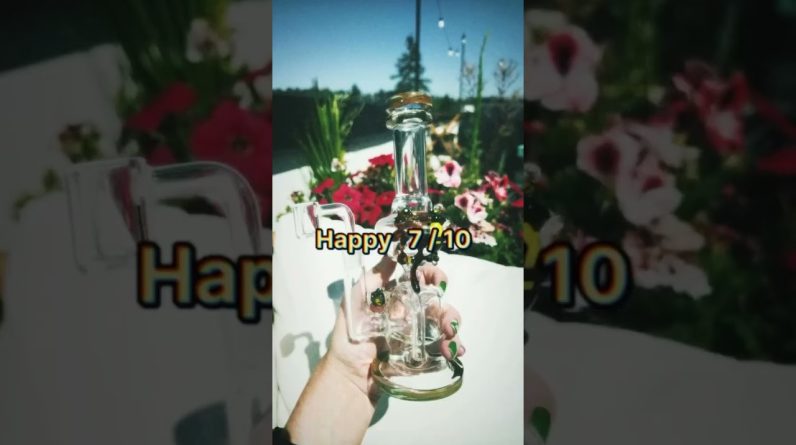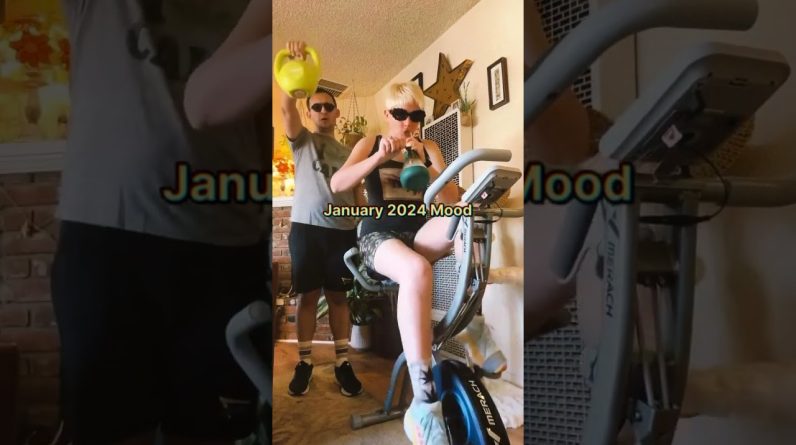Table of contents
- When Can I Harvest Marijuana?
- So, when is the best time to harvest your cannabis plants?
- What do trichomes look like when ready to harvest?
- The curing process
- Marijuana Plant Anatomy
- How to Observe Marijuana Plant Maturity?
- CBN and THC Levels
- When to Harvest Cannabis to Get THC
- When to Harvest Weed Based on Effects
- Extra Tips for Harvesting Marijuana
- How to Speed Up Harvesting
- To Sum Up; The future of weed is in your hands. It’s time to cultivate!
- Harvesting cannabis FAQs
When Can I Harvest Marijuana?
We are glad that you are here with us and have been growing cannabis and now want to know what time is the right time to harvest cannabis. The moment to reap what you have sown, the reward of your hard work, a labor of love we hope.
Cannabis cultivation is not just watering cannabis plants. Many factors influence the growth and development of your own plants. Luckily your experience and familiarity with the cannabis plants will grow too. I know a couple of master growers who have developed a sixth sense for the plant. They can almost predict the future whilst looking at a fan leaf and know the optimal harvest time to a tee creating the most gorgeous, and powerful buds. (#lifegoals)
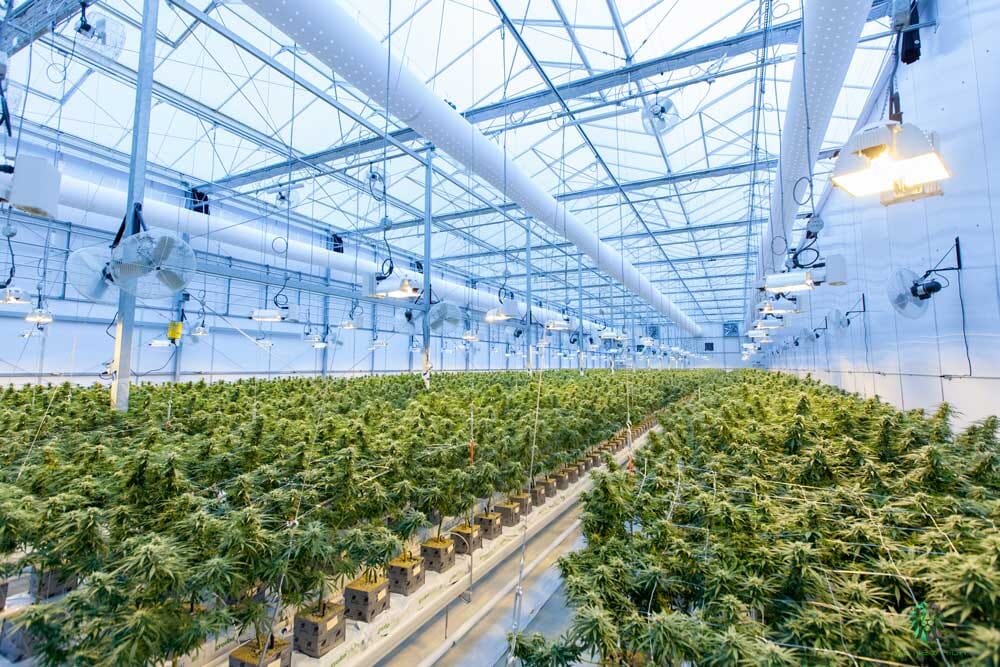
So keeping a close eye on your cannabis plants and knowing what to look for can make all the difference in determining the right time to harvest!
Monitor the entire plant and check the lower buds, are they not too low so they don’t get wet from the irrigation system. Learn to read the leaves and check the underside too as some monsters hide under the fan leaves. If you care for your cannabis plant, check in daily or once in a few days, to develop a routine that you can follow to the letter. This will give you the overview to notice if something is off and where / what to look for. Practice makes perfect!
Don’t be afraid to investigate further, If you think something is off but can’t find it straight away, cut up a large fan leaf to inspect it thoroughly. Same for the buds, you can sample buds to look for evidence of insects, mold, or bud rot. Better safe than sorry, if you catch a “plague” on time you can control the damage to just a few plants; Saving your harvest!
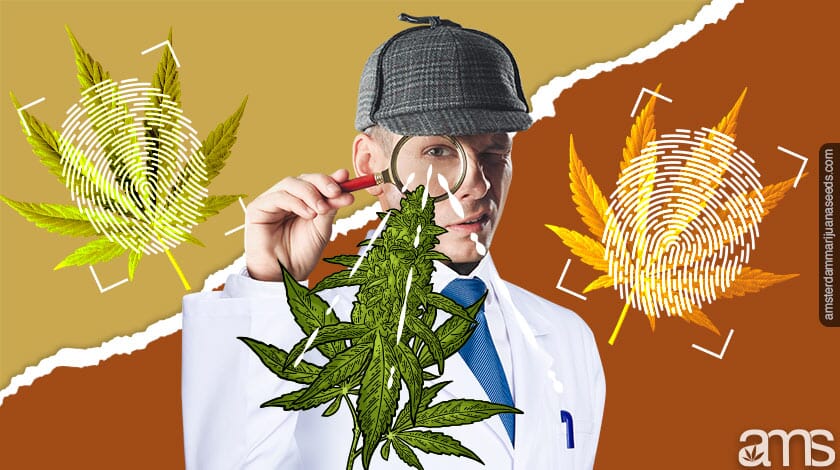
For a good inspection, the naked eye is not always good enough. So get yourself a nice magnifying glass, and while you are at it a lab coat too. You will not only see more but look very professional whilst doing so.
So, when is the best time to harvest your cannabis plants?
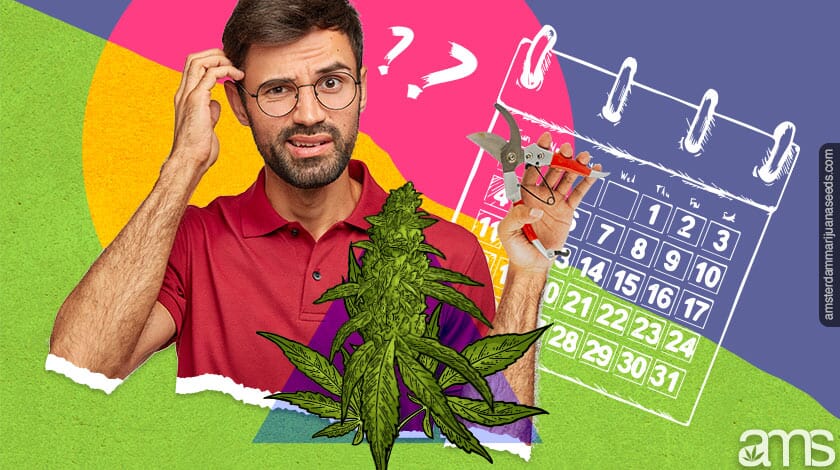
The answer may vary depending on who you ask, but most experts agree that the ideal time to harvest is when 50-70% of the cannabis trichomes are ready.
What do trichomes look like when ready to harvest?
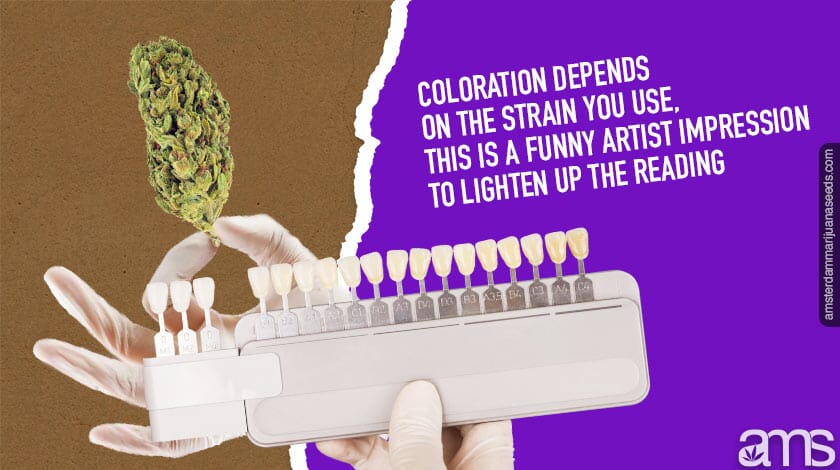
Some mature trichomes are completely yellow, and a few can remain milky white, whilst others have amber trichomes. You must wait until 70% of the clear trichomes have turned into solid amber trichomes to obtain higher amounts of CBD & THC. It’s the time when many growers harvest their cannabis plants.
The curing process
The curing stage of the harvested cannabis plant is an art form in itself that has been perfected by growers over the years. The goal of curing is to preserve the potency and flavor of the buds while reducing the risk of mold or pest infestation.
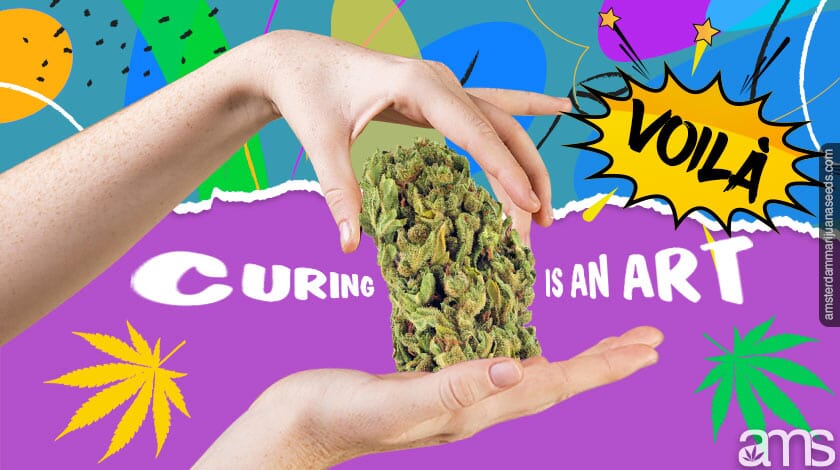
The most important step in drying cannabis is to carefully control the humidity and temperature levels. If the buds are too dry, they will lose their potency and flavor. If they are too moist, they will be susceptible to mold and pests. The ideal relative humidity for curing cannabis is between 60-65%. The buds should also be stored in a dark, airtight container such as a mason jar. The jars should be opened daily to allow the buds to “breathe”. The curing process can take anywhere from two weeks to two months, depending on the desired results. By taking the time and we can not emphasize that enough, hasting now when you have invested 10 to 12 weeks already is no gain. Take your time to cure your harvest, this way you be sure that your Cannabis buds are of the highest quality.
Marijuana Plant Anatomy
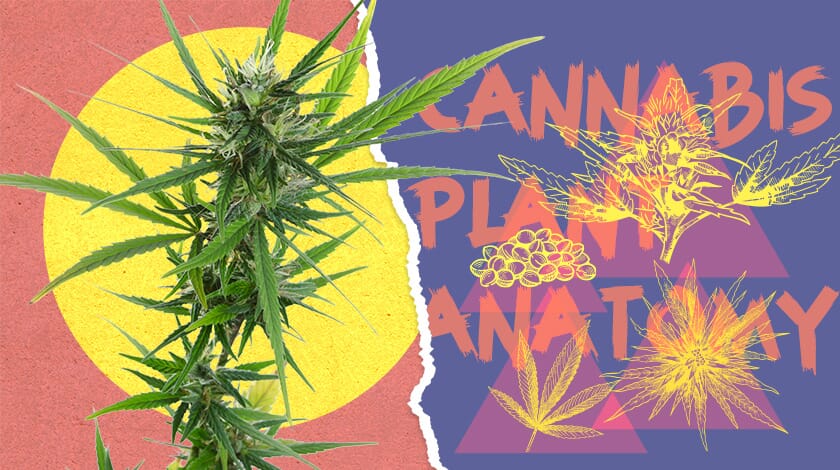
Just in case you do not know it yet, here is a summary of the anatomy of the whole plant, so you know which parts to focus on when you determine when it is harvest time.
Fan Leaves
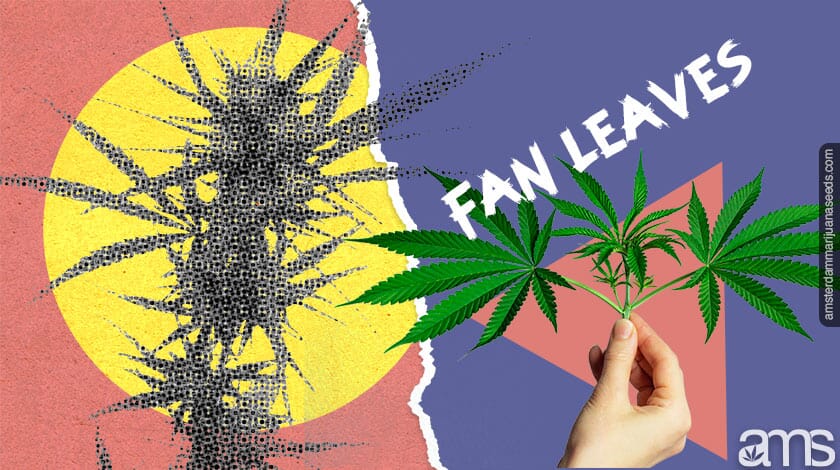
The fan leaves of a weed plant are so conspicuous, that they have become the universal symbol for weed. What the layman does not know, however, is that the leaves contain very low levels of THC.
THC
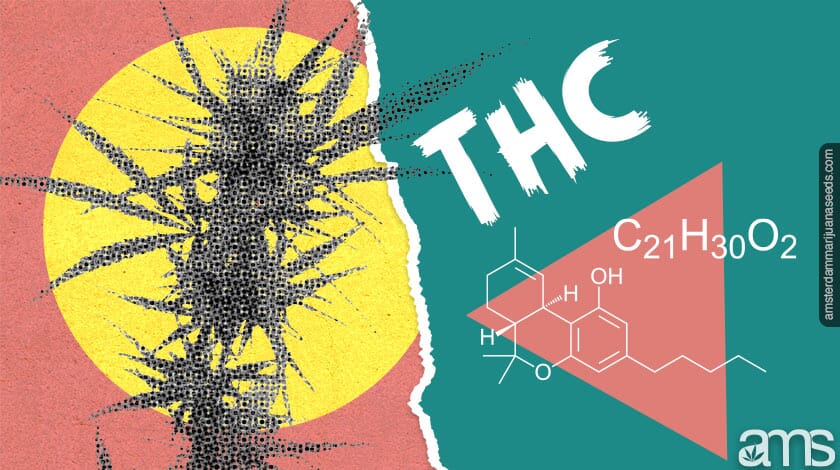
They can provide good indicators for the plant’s maturity, but they are mostly thrown out after trimming.
Stem
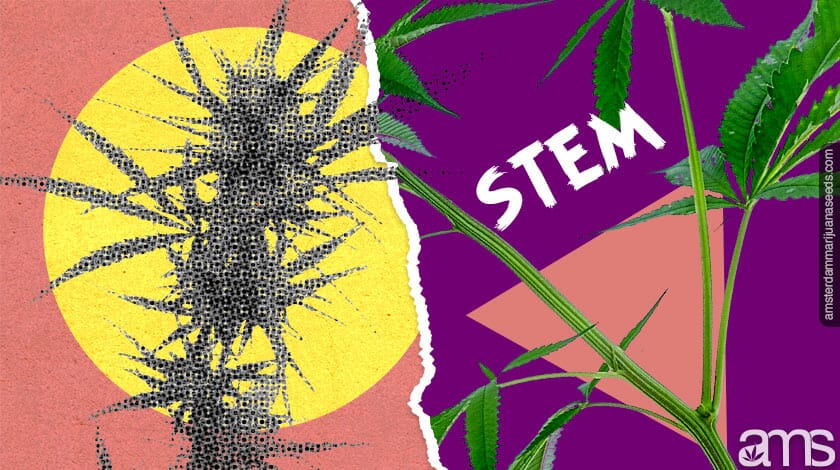
This part of the plant contains more THC than the leaf. For this reason, the stem of a cannabis plant is used as an additive for concentrates and tinctures.
Flower or Bud
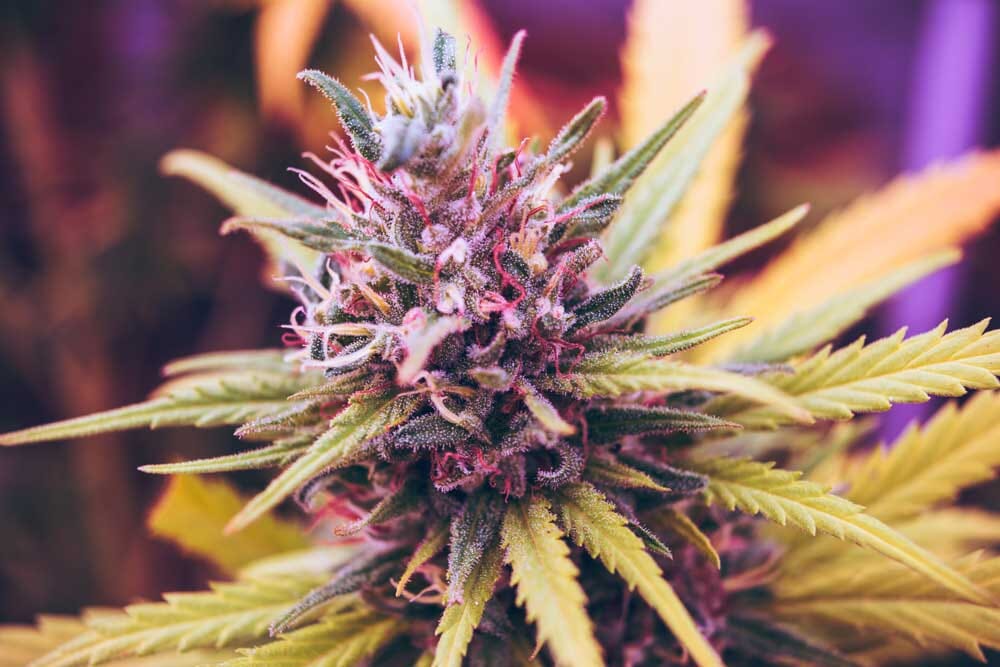
This is inarguably the most important part of a marijuana plant. It is what most farmers harvest, and is the best indicator of when to harvest cannabis. Especially in the final days, keep a close eye on the cannabis flowers as bud rot can occur quickly.
Pistil
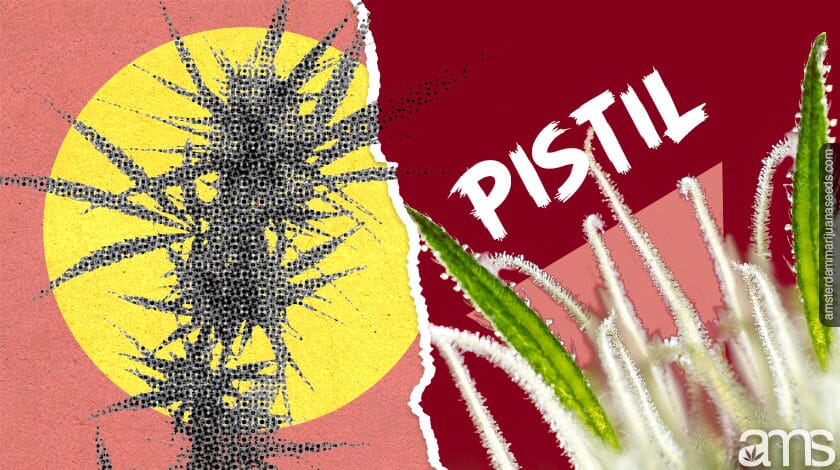
This is the female part of a flower and can be easily identified. The pistil of the marijuana plants is a red or orange hair-like feature that emerges from the flower. While the pistil does not contain any THC, it plays a big role in determining when to harvest marijuana.
Sugar leaves
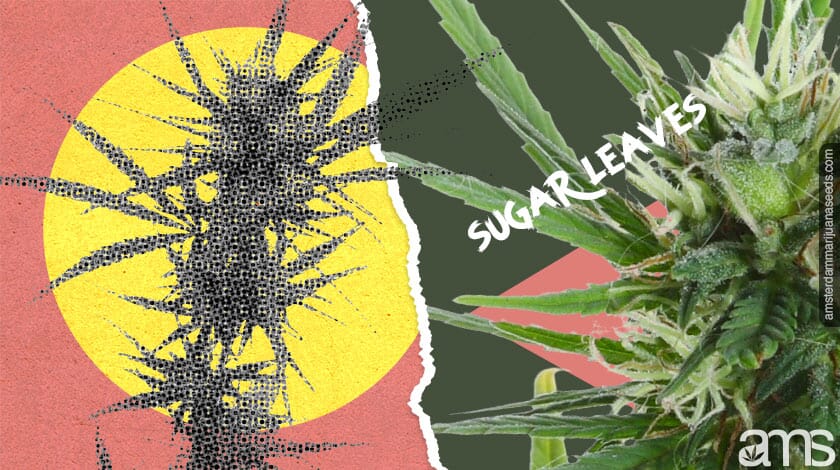
Unlike fan leaves, the sugar leaves of a weed plant have a high THC concentration. You can identify them easily since they grow out of the flower bud, with only the tips peeking through to the outside. They are normally not smoked since they have a plant-like test, but there are many other things they can be used for.
Trichomes
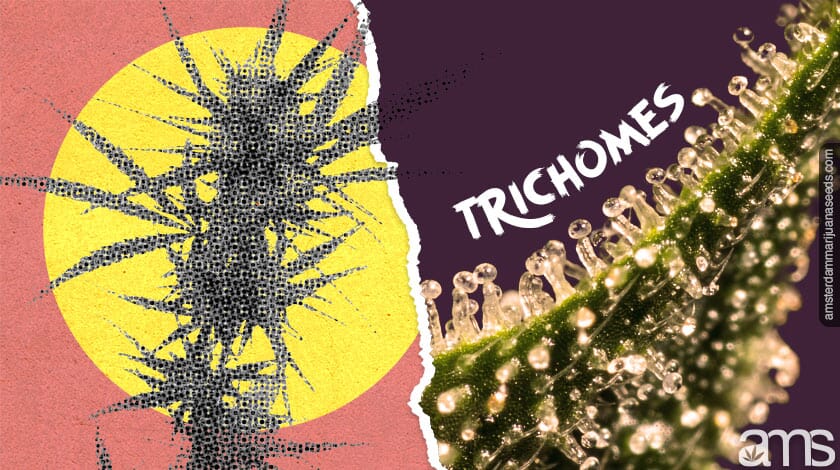
Trichomes are the tiny crystals on the leaves and buds that contain the plant’s cannabinoids. They are sticky and contain the highest levels of THC. They are also the best indicators of when to harvest marijuana.
How to Observe Marijuana Plant Maturity
- Magnifying tools are a must-have if you want to know when to harvest marijuana. The good thing is you probably already have some of these around before you start growing marijuana. Here are the most popular ones:
- Jeweler’s loupe: this is one of the oldest tools used for this purpose and is therefore cheap and requires fewer technical skills. It is small and easy to carry around. Most jewelers’ loupes have 10X magnification, which is good enough for observing when to harvest weed. However, if you do not have sharp eyes, get one with higher magnification.
- Handheld Magnifying Glass: at the risk of looking like a scientist from back in the day, get yourself a handheld magnifier. It is better than a jeweler’s loupe, but it is exhausting to carry around and also to observe a plant with. Familiarize yourself with how to use it before you attempt to gauge the maturity of your plant.
- Phone camera: almost everyone has a phone with a camera fitted with zooming capabilities. The better the resolution of your camera, the more accurate your observation. All you need to do when using your phone’s camera as a magnifying tool is to take a lot of pictures when the light is at its best. Go through the pictures afterward, zooming in on the different parts of your plant to see if any changes indicate maturity.
- Digital microscope: not only are they used by modern scientists but they can also be used by weed growers! A digital microscope is the best tool for observing the maturity of your marijuana plant. It provides good lighting and excellent magnification and allows for storing images. This way you can take pictures of your plant at different stages and compare how it looks as it matures. A digital microscope is more expensive than the other methods mentioned in this list and will need you to invest in a laptop (if you do not have one), but the payoff is worth it.

CBN and THC Levels
As we have seen above, the trichomes of a marijuana plant produce the highest amount of THC. The amount contained at any one time can be determined by the color of the trichomes. There reaches a point where the trichomes produce the maximum amount of THC, and this is when the plant is at its peak potency. That THC level is very psychoactive and provides energy to the user.
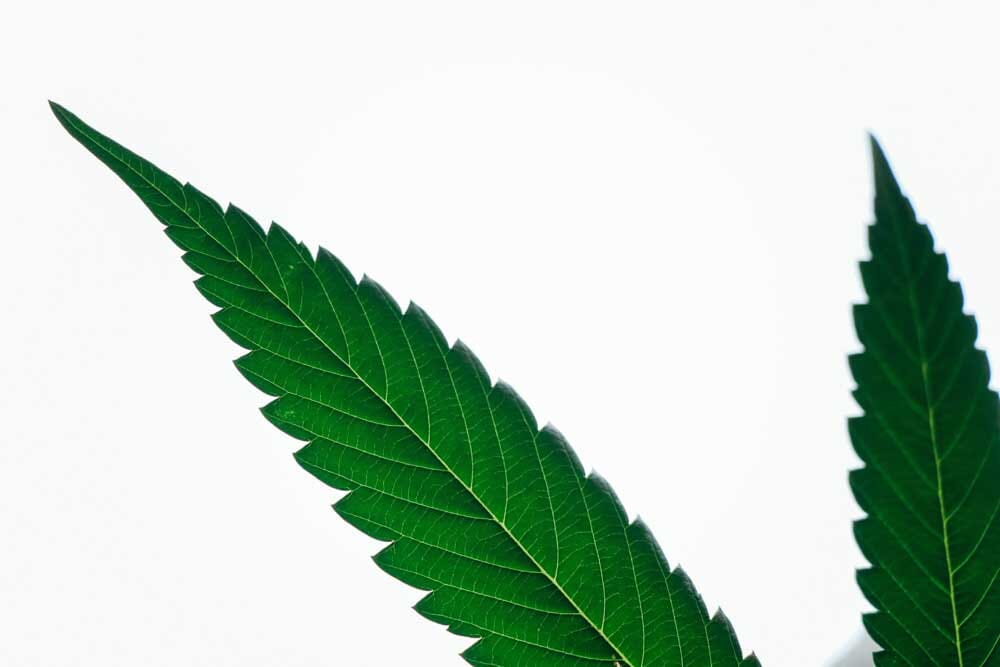
Since the plant is constantly exposed to the sun and air, the level of THC in the trichomes breaks down after peak potency is achieved. UV rays and oxygen break down THC to cannabinol (CBN). CBN is a good sedative and produces a soothing, relaxing effect on the user. The many benefits of CBN include helping with pain, and this is what many people with cancer or chronic pain are prescribed. The upside, or downside of CBN, is that it does not have psychoactive effects. Most growers do not let their weed reach the CBN levels regardless of all of its benefits.
When to Harvest Cannabis to Get THC
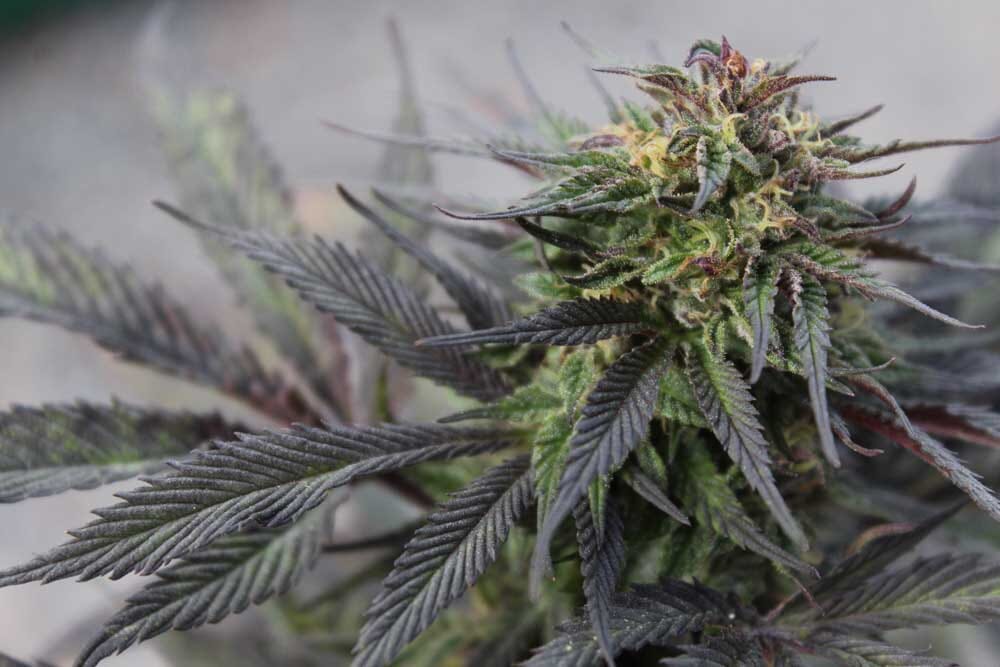
THC (tetrahydrocannabinol) is a chemical found in marijuana that causes much of the ‘high’ associated with the plant. Since most users want this high, many farmers like to wait until their plants are ripe with THC before they harvest marijuana plants.
If you want to know when to harvest cannabis plants that have high levels of THC, you have to pay attention to the trichomes in the flower. The little ball at the very top of a trichome is where all the cannabis goodness is located. You can easily see the changes that occur in this area using a microscope. Here are the things to look out for:
- When the trichomes are clear, the buds are still young and developing. Take care that you look at different buds on the plant since the ones on the top tend to mature faster. Even when your trichomes are clear, you should constantly monitor them since changes appear quickly.
- For many Indica strains harvest time is when you notice cloudy or opaque trichomes, then your plant is mature. At this stage, the trichomes have produced all the THC they can and will not make any more. Remember, trichomes on different flowers mature at different rates so you can remove the developed ones and let the slower ones reach maturity.
- When you notice amber or brownish trichomes, this means that the trichomes cannot produce any more THC and she is ready for harvest! Leaving the plant for too long leads to a breakdown of THC into CBN which has a sedative effect. When the plants reach 30% amber and 70% cloudy trichomes, this is the optimum time to start harvesting many strains of marijuana, including Sativa hybrids.
- When your trichomes are fully amber, then your plant is too mature.
When to Harvest Weed Based on Effects

Since different harvest times give different effects to the user, when to harvest cannabis should be dependent on what kind of weed effect you desire. Here is a summary of when to harvest based on the different kinds of high:
- Relaxing high: harvest when the trichomes are 70-90% cloudy.
- Energetic high: harvest when the trichomes are 50% clear and 50% cloudy.
- Euphoric high: when the trichomes are 50-70% cloudy.
Another way you can determine when to harvest cannabis for the different effects is going to depend on the pistil color.
- Euphoric high: the pistils should be around 60-70% dark and curling.
- Relaxing high: the pistils should be around 70-90% dark and curling.
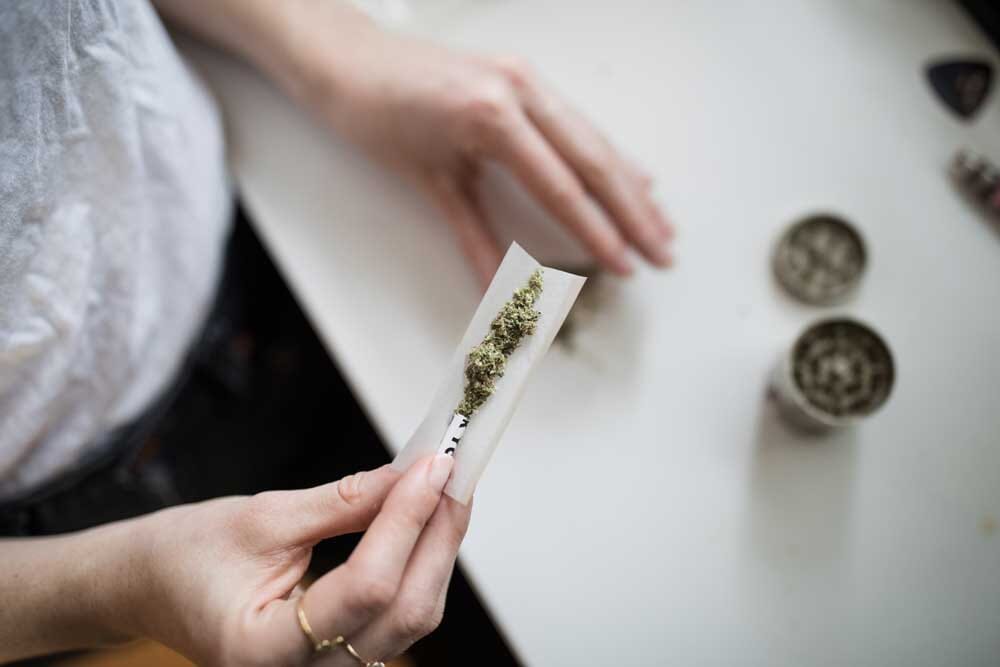
Other Indicators of When to Harvest Marijuana
While potency is the biggest determinant of when to harvest weed, there are other factors that should make the decision when to harvest easier for you. Here are a few:
Flowering time: this is going to depend on the strain you have planted. Marijuana plants mature at different rates, so it is important to check each plant individually.
- Indica strains can be harvested 8 weeks after flowering.
- Sativa strains can be harvested between 10 to 12 weeks after flowering.
- Autoflowers are ready to harvest 10 weeks after the transition from seedling to a bud.
Pistils: as we saw earlier, the pistils play a big role in determining when to harvest marijuana. In a healthy weed plant that is nearing maturity, the pistils stick right out of the body and are white. When the plant is ready for harvesting, the pistils curl back toward the flower and turn dark.
- 50-70% brown indicates a young harvest with a light taste.
- 70-90% dark indicates a ripe harvest with a potent taste.
- 90-100% indicates a late harvest with a sharp taste.
Remember, not all the pistils turn dark at the same time. To maximize your harvest, you can harvest those that are ready and leave the rest to continue maturing.
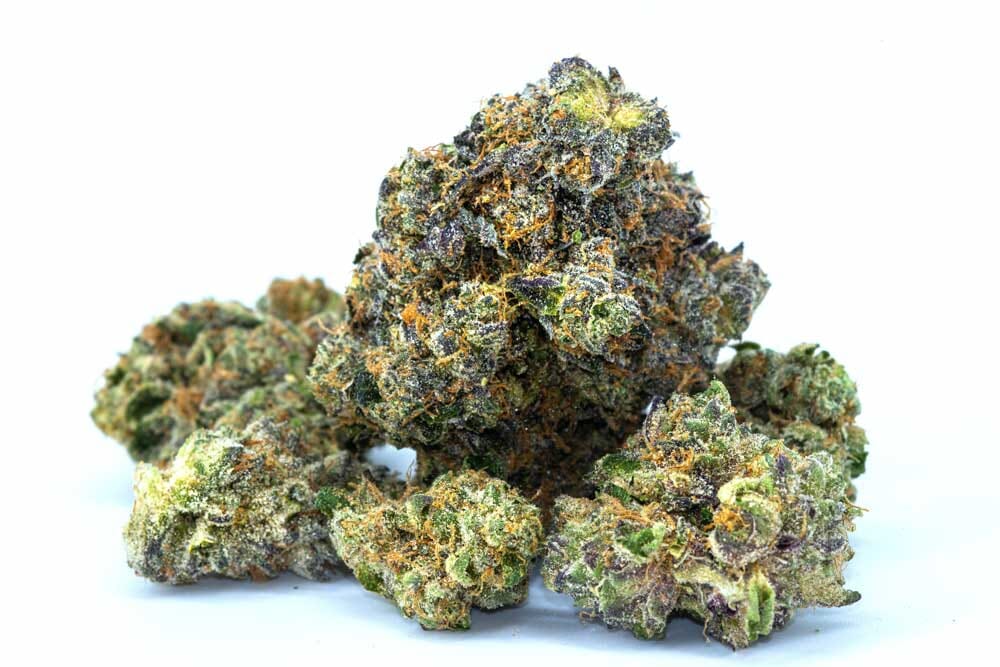
Trichomes plus the Pistil: while looking at either the trichomes or the pistil can independently give you good results, however, combining these methods will give you the most accurate indicators of when to harvest marijuana. Sometimes the pistils remain white even as the trichomes turn cloudy. Other times the pistils start curling while the trichomes remain clear. You will get the most potent THC when both these parts start changing. So instead of depending on just one method, combine these two to determine when to harvest weed.
Extra Tips for Harvesting Marijuana

Here are some tried and tested rules of thumb that will ensure you get better results when determining when to harvest marijuana:
- The harvest window starts when the plant is not growing more or new white hairs, or pistils, and nearly half of the pistils have started to darken and curl in.
- If the pistils are almost sticking out but the trichomes are still translucent, the plant is too young and not ready for harvesting. You can consider this harvest time if you want to lower your bud potency. Keep in mind that you will get a lower yield at this point too.
- The highest level of THC is reached when most of the trichomes have turned cloudy. Remember to use a microscope or jeweler’s loupe to observe the trichomes. Cloudy trichomes have the highest THC levels and have more psychoactive and euphoric effects.
- The harvest window passes once the trichomes start withering or turning grey. Weed harvested at this stage will act more as a sedative and will not have a lot of psychoactive effects. To get the best weed, harvest within four weeks after the beginning of the harvest window.
- Some weed strains, like the Haze and Sativa strains, never turn amber. You will know when your plans are ready for harvest once almost all their trichomes have turned white or cloudy.
- To get the ‘couch lock’ or sedating effect of weed, harvest when it is toward the end of the harvest period. At this time, the trichomes will be darker.
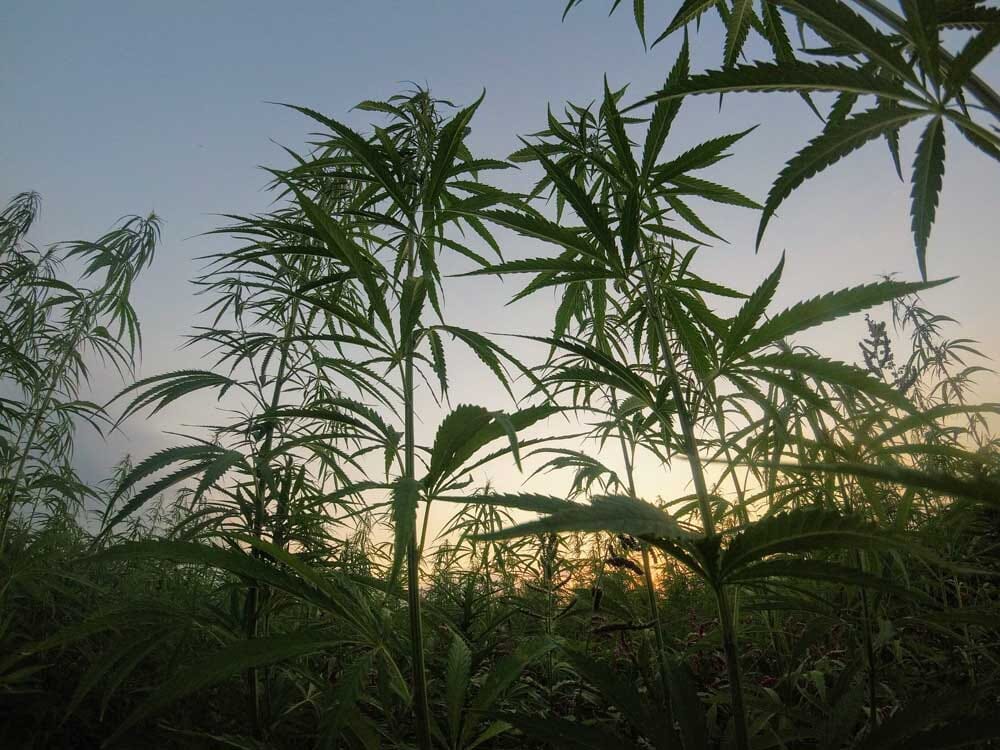
How to Speed Up Harvesting
We are not a fan of this but understand that sometimes there’s just not enough time to let nature take its course! The good thing is, that there are ways to speed up the harvesting time without sacrificing yields and quality. Let us look at some of them.
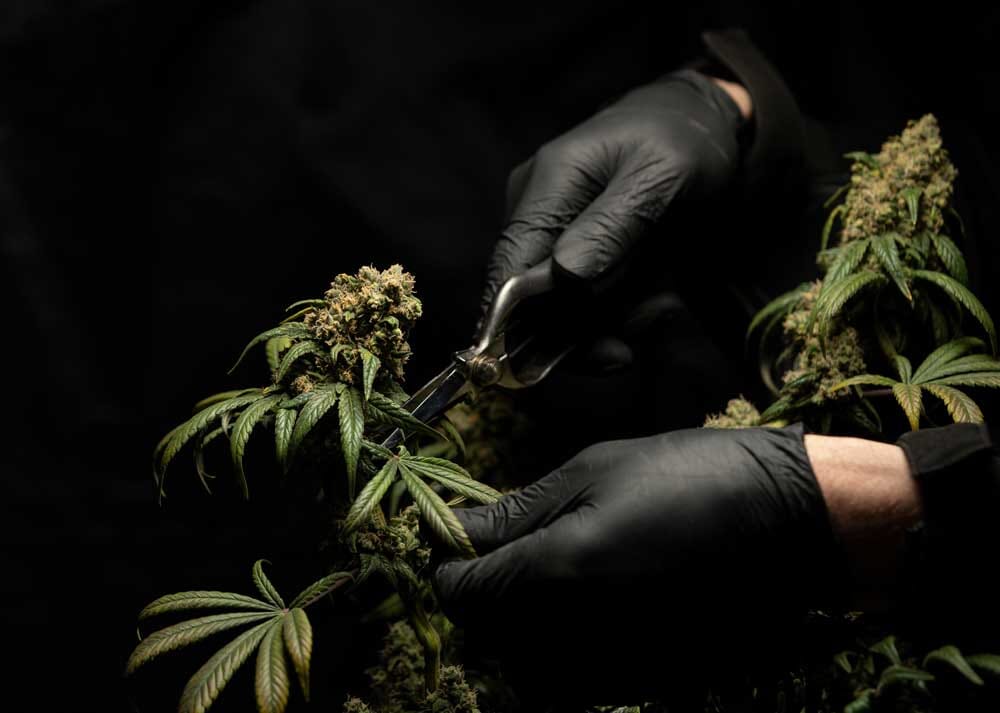
- Fewer Hours of Light in the Flowering phase: You can change the amount of light you allow your plants to get after they start flowering. The amount of light should depend on the strain you planted. Sativa and Haze strains, for example, can mature well without a lot of light. Restricting the amount of light helps the buds mature faster.
- Get a Quick-Finishing Strain: if you want a quick harvest, then get one of the various auto-flowering strains available. These grow up independent of light availability, which is perfect for places that do not get a lot of sunlight. Auto-flowering strains can be ready for harvest within 3 months of planting.
- 24 Hours of Light a Day in Vegetative Stage: a weed plant grows through several life stages, and the vegetative stage comes right before the flowering stage. To get a shorter harvesting period, you can expose your plant to light for 24 hours throughout the vegetative stage. This makes the plant mature and gets to the flowering stage faster.
- Initiate the Flowering phase Earlier: You can change your light schedule so that your seedlings make buds immediately. This is an inefficient way of growing your weed but it does speed up the growth process. Before flowering them, wait just a bit to ensure you get a satisfactory amount of bud.
- Grow Indoors: this method gives you maximum control over how your plants will grow, how big they will get, and what they will yield at harvest. Using potting plants or a greenhouse is probably a good way to ensure all this control.
- Use Correct Nutrients for the Correct Stage: a marijuana plant requires different nutrients as it goes through the different growth stages. The astute farmer will familiarize themselves with the nutrient requirements and either buy them as the plant grows or hand-mix them depending on what is needed. Feeding the plant correctly will reduce the overall time before harvest.
- React Quickly to Problems: like other plants, weed plants can get pest infestations or experience illnesses like too many nutrients. Pay close attention to your plants and note every problem that arises, no matter how small. Reacting quickly also saves you from dealing with out-of-control problems further on. The more attention you give to your plant, the faster you can harvest.
How to harvest a Cannabis plant step by step
- Set the working place first.
- Clean your tools with gloves or rubber gloves when you’ll touch the plants.
- Based on plant length it can take up to one hour.
- Install the branches into a cardboard bag. Break them into small twigs and buds. The length of the buds and humidity of the drying area determine how big or small they should be.
To Sum Up… The future of weed is in your hands. It’s time to cultivate!
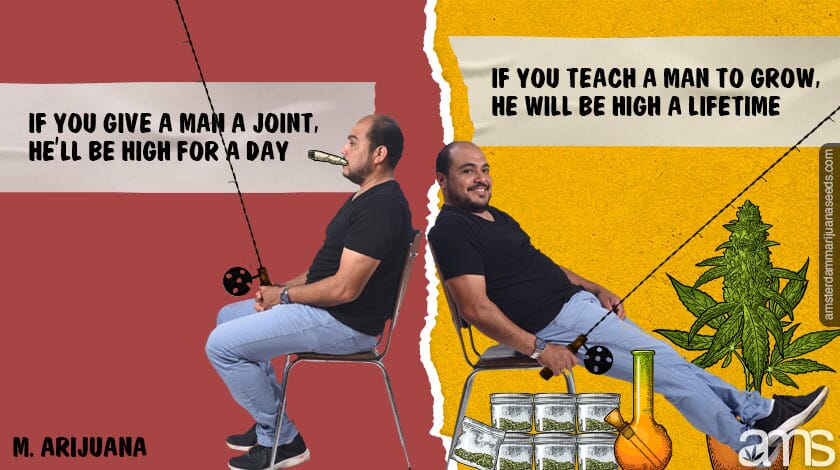
We started with a plan to create the best cannabis seeds, and we haven’t stopped since. Our focus on quality has paid off in spades for our customers who appreciate high-quality products that are both affordable as well as feminized – meaning they’ll only produce one strain per seed! It’s been an exciting journey building up this business but it would be nothing without you guys so thank you for becoming part of the cannabis community.
Cannabis cultivation is a craft. There are many different strains, some easy to grow others more difficult- but it’s worth the effort! Learning to read the plant, knowing when it’s ready for harvest. Watching as your plant grows thick dense buds and produces those milky white trichomes. Honing your craft and growing your marijuana gives an extra kick once the moment has come and you can enjoy your homegrown weed. Your skillset will ultimately determine the size, the high and, weight of your cannabis buds.
Harvesting cannabis Frequently Asked Questions
Should I harvest top buds first?
There are several kinds of plants that grow from top to bottom or grow from the outside in. For the first kind, the flowers mature more quickly than the inside flowers hidden in sunlight on the outside. Immediately after the outer buds have been harvested, the internal branches are opened to sunlight and might benefit from this in their final growth.
What is the difference between marijuana and cannabis?
People around the country have started using the medical name cannabis and ditching the “street name” marijuana. These names refer to the same plant and there are no differences whatsoever.
How long does it take to grow a cannabis plant?
On average cannabis matures after about eight or nine weeks of blooming however, the maturity interval can differ between strains and the circumstances where your plants grow.
How much should I spend on cannabis harvesting tools?

Most tools use are your “garden variety” (pun intended!) tools of cutters and scissors. The lifespan depends on how well you clean and take care of them. I would estimate for a 2 man harvesting job you would be spending a maximum of $50,- on tools. Free tip, if you’re harvesting for a longer period or more frequently, investing in a decent chair is very welcome! Trimming buds to perfection is a pain in the ass enough!
When should I stop watering before harvesting?
Stop irrigation at the end of the first day of harvest and stop watering. The only reason is that it’s possible to allow plants to begin to wilt in the first place.
Pruning the plant?
Pruning is an important part of cannabis growing. When you are growing with limited space you want the plant to receive as much light as it can and not waste energy growing the branches and fan leaves in the shade. Be gentle when doing so, small plants can take a heavy blow from this and might not recover from the bisection.
Source: https://amsterdammarijuanaseeds.com/blog/harvesting-weed/


